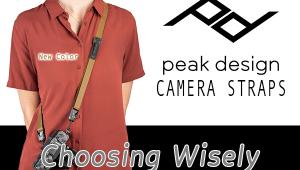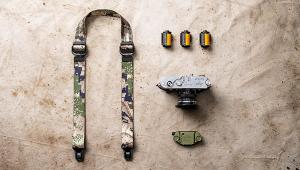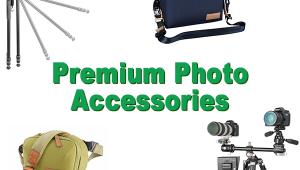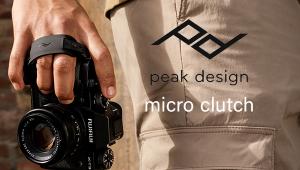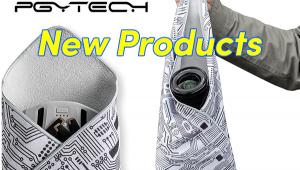Network Attached Storage (NAS) Drives: Overview & Why You Need One
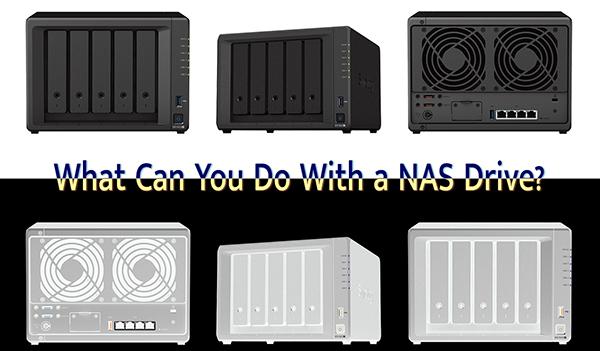
If you stumble trying to decipher the abbreviation NAS, don’t feel alone. When cameras went digital, photographers were expected to magically become computer wizards. Who has the time? Among the many advantages of installing a NAS drive is the immediate harnessing of powerful computer tools without a junior degree in IT—all the while keeping your energy focused on what you do best: taking pictures, shooting videos and/or creating web content.
This is an introduction to NAS technology; today we skim the surface layers only and take a look at the many features and benefits. Later, when we review the Synology DiskStation DS1522+ 5-Bay NAS, we’ll dip deeper into the innards. Not to tip our hand just yet, we’ve already discovered why more than half of all Fortune 500 companies use Synology.
 Description
Description
NAS is short for Network Attached Storage. It’s a box containing hard drives and it’s attached to your network by a regular Ethernet cable. You can access the contents from any computer in your home—or offsite—to which you have given permission. And you can share specific files with others while maintaining strict, secure control over that they can and cannot access.
The bells are going off already, right? Let’s say you run a pro photo studio. You can save all original digital assets—or only redundant backup copies of those files—in one secure, centralized place and read or write to the files from wherever you are. In Manhattan and want to show a client a photo you’d forgotten to download to your laptop? No problem—it’s just a couple clicks away. If you use an outside resource to retouch or knockout images, you can give them a nice little fenced off section of the NAS where you can exchange workfiles and be confident that they can’t see anything you don’t want them to see. Want to share an album with a wedding photo customer? Give them access to the folder(s) containing their proofs.
These possibilities are only the beginning.

NAS vs Offsite Cloud Storage
Based on the above, NAS may sound a lot like plain-Jane Cloud Storage. NAS is preferable in many ways. Instead of being on a server located who knows where, your files are on that black box sitting on the table in your workroom or maybe basement. NAS drives typically are faster and allow more flexible file sharing options. Plus, you own the hardware and control the cost of adding more storage capacity without recurring fees. NAS drives nearly always give you more storage for the same dollars invested, too. And you can stream music and video—to multiple players—from your NAS for the whole family to enjoy.
Ease of Installation & Operation
The Synology DiskStation 1522+, for example, is a diskless enclosure. This is the norm. The idea is to buy an empty drive box and add just the number of drives and capacity you need. Hint: start out big; in the long run it’s cheaper to buy a little more than you need than to add more later.
Installing two hard drives (the DiskStation holds up to five, and 10 more can be added via accessories) took about one minute—no tools, no way to do it upside down or backwards. From there on it was plug-and-play. Plug in an Ethernet cable that’s connected to your router and plug in the power cord. The hardware setup took less time than it takes my Cuisinart coffeemaker to spit out four fresh cups.
If all the ports on your router are occupied, you can use an inexpensive powered network switch to create more ports. A good example is the NETGEAR 8-Port Gigabit Ethernet Plus model GS308E. It’s inexpensive and very simple to install.

The Synology DiskStation DS1522+ includes Synology DiskStation Manager (DSM), a very powerful software tool that gives you control over the installed hardware. The DSM Control Panel is a strong differentiator that gives Synology the nod over other brands. It walks you through every step.
On your computers, the NAS appears as a Network Drive. Open the drive, save files, download files, delete files. Whatever you normally do with a hard drive. The big difference is that this drive appears on ALL your computers. So if like me you sometimes enjoy coffee outdoors on the deck, the drive is accessible from your laptop. Want to work from your main editing computer? It shows up there, too. No more “I must have saved it to my other computer” syndrome. And to take it a step farther, your partner can access the same drive from their computer—if given security permissions—while sipping a glass of Heitz Cellar Martha's Vineyard Cabernet Sauvignon miles and miles away.
What About Security?
Synology actively and aggressively reacts to product security incidents. The Synology Product Security Incident Response Team (PSIRT) manages the receipt, investigation, coordination, and public reporting of security vulnerability information regarding Synology products.
Furthermore, on a local level, you can enable Security Advisor, a built-in DSM app that scans your Synology NAS, checks your DSM settings, and gives you advice on how to address security weaknesses. Visit Synology’s FAQs for more ways to protect your data.
 Major Benefits
Major Benefits
The above offhand examples give you an idea of the NAS drive’s potential. Here’s a tighter rundown.
Automated Backups with Optional Mirroring
Using backup software, your NAS can maintain vigilant backups of all your files, including the collaboration files you share with external resources. If configured as a RAID 1 your NAS can save two identical mirrored images, in case one hard drive should fail. In my book, redundancy reigns supreme.
File Accessibility Onsite and Offsite
You can store and access files from all your devices and, if it’s a Synology NAS, protect them with smart versioning. This provides great versatility and the ability to sort, manage, share and sync your data across multiple locations and with multiple users.
Share Files Securely
To share with others located offsite (or with workers within your confines) you can specify which users or groups can access, view or modify a shared folder and its contents. The access permissions of shared folders, as well as individual files and subfolders, can be customized for each user or group. The young lady who edits your video cannot read the accounting files, for instance.
 Easily Expandable Capacity
Easily Expandable Capacity
As in the case of the Synology DiskStation described here, NAS drives are typically sold as a diskless enclosure with open bays. The DiskStation DS1522+ has five drive bays. Select the size of the drives you need; start with a pair of 48TB drives and you still have three available bays for more. Plus, you can add up to 10 additional drives to your Synology DiskStation via accessories. Single users who just want backups and expanded file access can start even smaller with a pair of 4TB or 8TB drives. I always recommend buying drives in identical pairs so that they can be configured as RAID 1 to provide mirrored backup redundancy.
By the way, RAID is an acronym for Redundant Array of Independent Disks. A RAID controller can be configured to manage disk Read/Write activity of two or more drives for greater speed, mirrored redundancy or a combination of both. In you set up a pair of 4TB drives as RAID Level 1, identical data is written to each, and total capacity is 4TB even though you have two 4TB drives.
Video Surveillance
A NAS drive can serve as a repository for surveillance video. The DiskStation DS1522+ supports up to 40 cameras.
Locate it Anywhere
No need to surrender desktop space. NAS drives can be located anywhere they can be plugged in with a CAT5 (Ethernet) cable. I often see photographers’ desks cluttered with miscellaneous external drives and wire everywhere. Take your workspace back with NAS.

Multimedia Server
Synology Photos, a separate piece of software, serves as a media organization hub for photographers and videographers seeking to efficiently manage and share their photos and videos through intuitive browsing options and secure sharing methods.
Your family can enjoy streaming video on multiple smart TVs, too. Or music. Or the view the family album—especially useful when one of the kiddos is away in college or has moved to a distant city.
Protection Against Ransomware
While you may not perceive this as an immediate threat, we live in a crazy world that becomes less cyber safe by the day.

Practical Applications Abound
In summary, a NAS drive is a must-have convenience necessity for the many photographers who use a tethered camera/computer in their studio and a different computer, often in a different physical location, for editing, sharing and file storage. And a NAS is a prayer answered for photographers and videographers who enjoy the freedom of working from more than one computer in multiple locations. Never again schlep external HDDs (or heaven forbid, thumb drives) or use slow cloud file transfer while sipping a Flat White at Starbucks.
This product is also a valuable tool for wedding, school and portrait photographers who manage multiple inputs (i.e., cameras), multiple computers and need to share files with clients in a secure, controlled environment.
And if for nothing else, it’s a tremendous backup system that also allows you to work from different computers throughout your home or studio, including when you’re off campus.
—Jon Sienkiewicz
(As an Amazon Associate, Shutterbug earns from qualifying purchases linked in this story.)
- Log in or register to post comments




